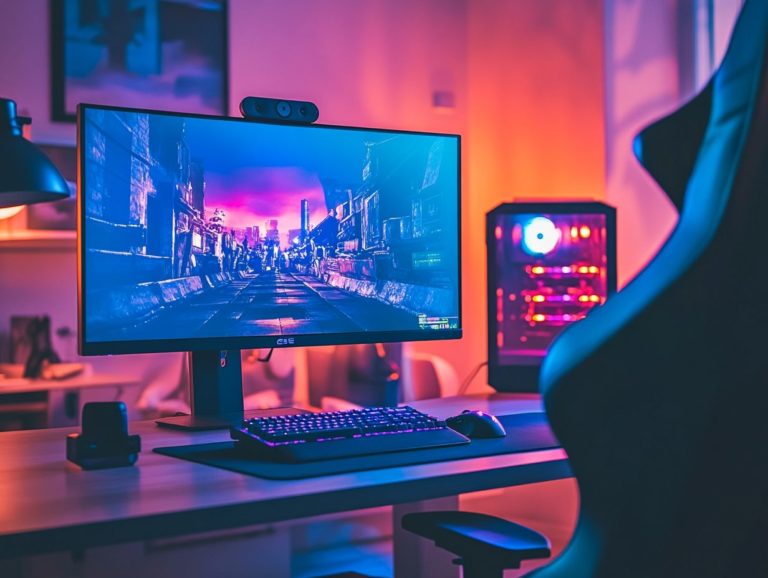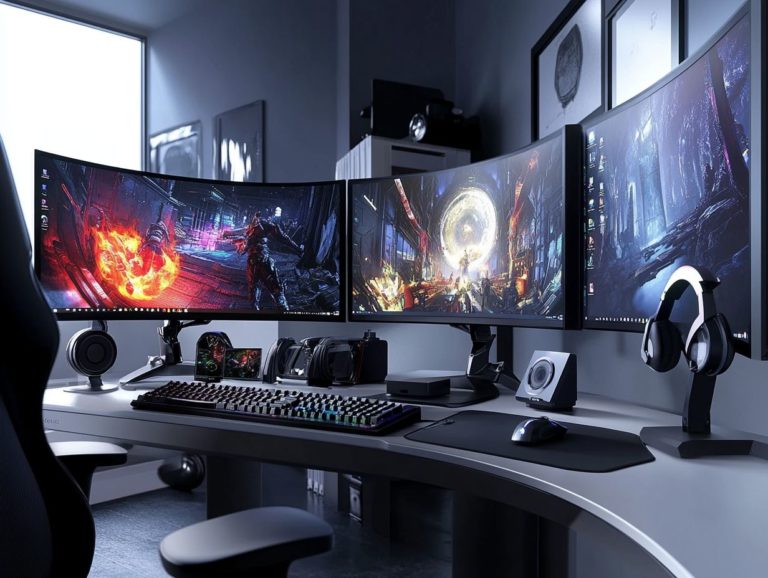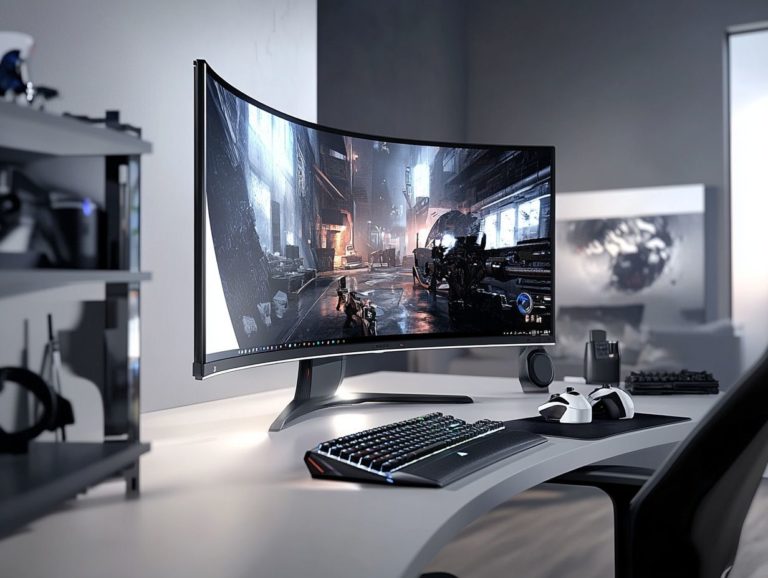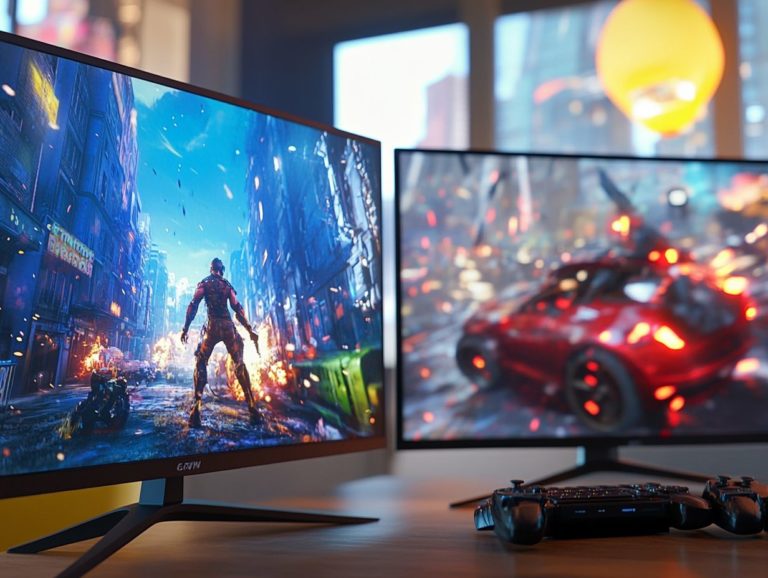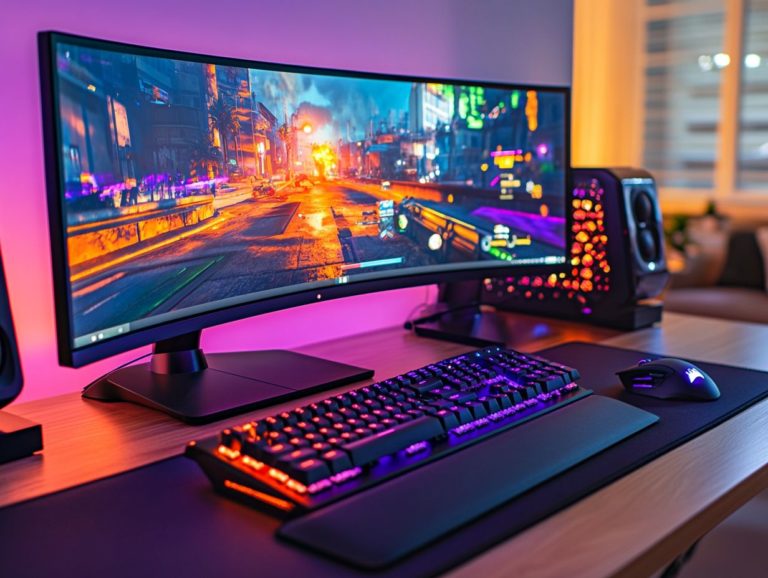the pros and cons of 144hz monitors
In today’s fast-paced digital landscape, selecting the right monitor can truly elevate your experience. This is especially true if you’re a gamer or a creative professional.
144Hz monitors are popular. They deliver smoother visuals and better responsiveness. But are they the perfect match for your needs?
This article delves into what a 144Hz monitor entails. It examines its advantages and disadvantages, along with key factors to consider before making a purchase. It also explores viable alternatives, empowering you to make an informed decision.
Whether you re upgrading your gaming setup or seeking to boost your productivity, this guide will support you at every turn.
Contents
Key Takeaways:
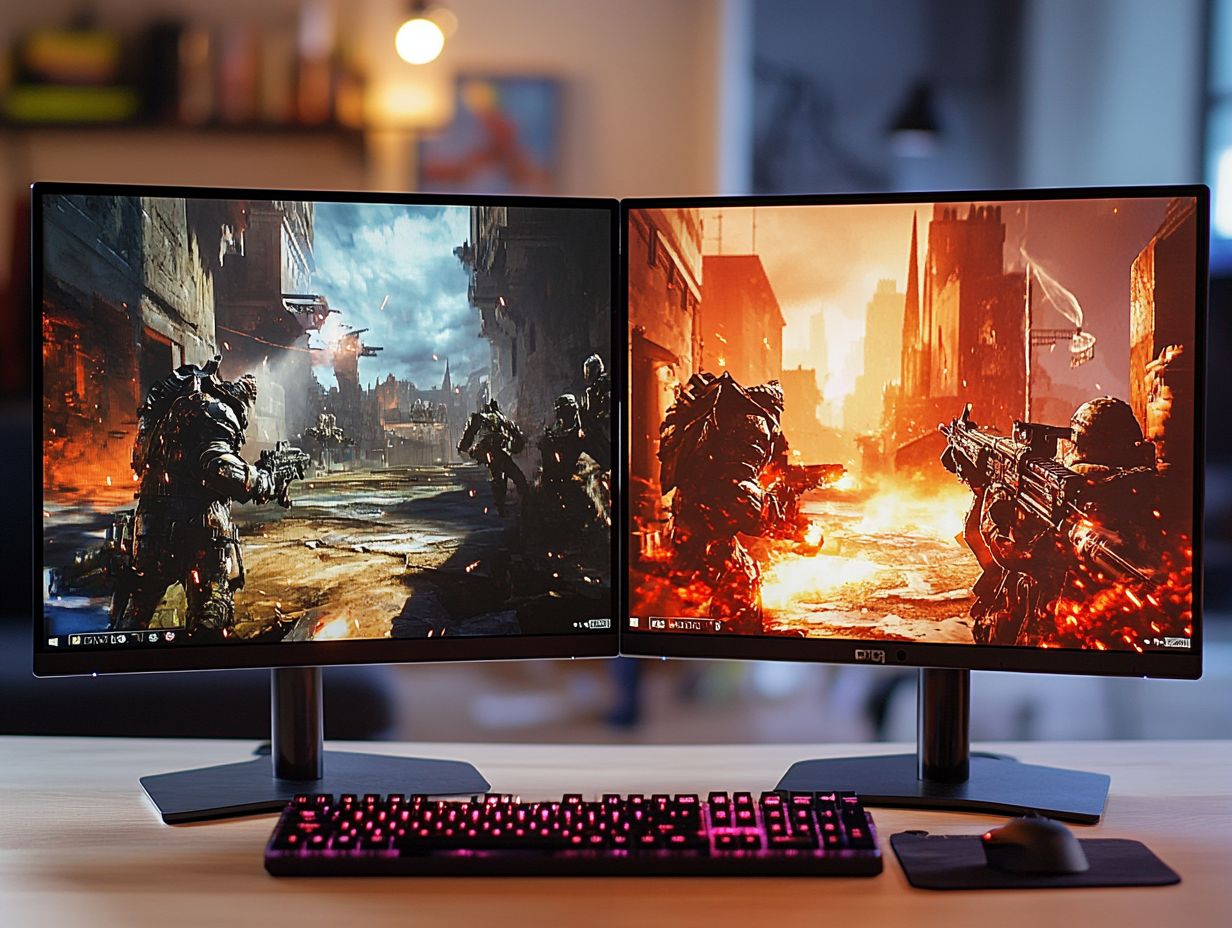
1. 144Hz monitors offer a smoother and more immersive gaming experience compared to lower refresh rate monitors.
2. The higher cost and limited compatibility of 144Hz monitors are major drawbacks to consider.
3. Assess your budget, usage needs, and compatibility with other devices before deciding on a 144Hz monitor.
Understanding 144Hz Monitors
144Hz monitors have transformed gaming experiences. They offer a refresh rate that dramatically elevates both visual quality and performance.
Unlike traditional 60Hz displays, which can disrupt the fluidity of fast-paced action games, a 144Hz monitor ensures seamless motion, significantly reducing input lag.
This is vital in competitive gaming settings. Every frame can mean the difference between victory and defeat. As gaming evolves with high-speed movements and graphics-intensive titles like DOOM Eternal and Dragon Ball FighterZ, understanding refresh rates is essential for gaining a competitive edge.
What is a 144Hz Monitor?
A 144Hz monitor refreshes the image 144 times per second. This elevates your visual experience to smoothness and responsiveness that lower refresh rate monitors can t match.
This technology supercharges your gameplay, enabling quicker reactions and fluid motion, especially in high-octane situations like first-person shooters or racing games.
At its essence, a 144Hz monitor uses advanced refresh technology that minimizes screen tearing and motion blur. This provides a crystal-clear view of fast-moving action.
High pixel response times are key to this clarity. They effectively reduce ghosting effects, ensuring each frame is rendered with sharp precision.
For gamers engaged in competitive play, you’ll quickly notice that your strategic moves become more accurate. This grants you a noteworthy advantage over opponents relying on standard displays.
Advantages of 144Hz Monitors
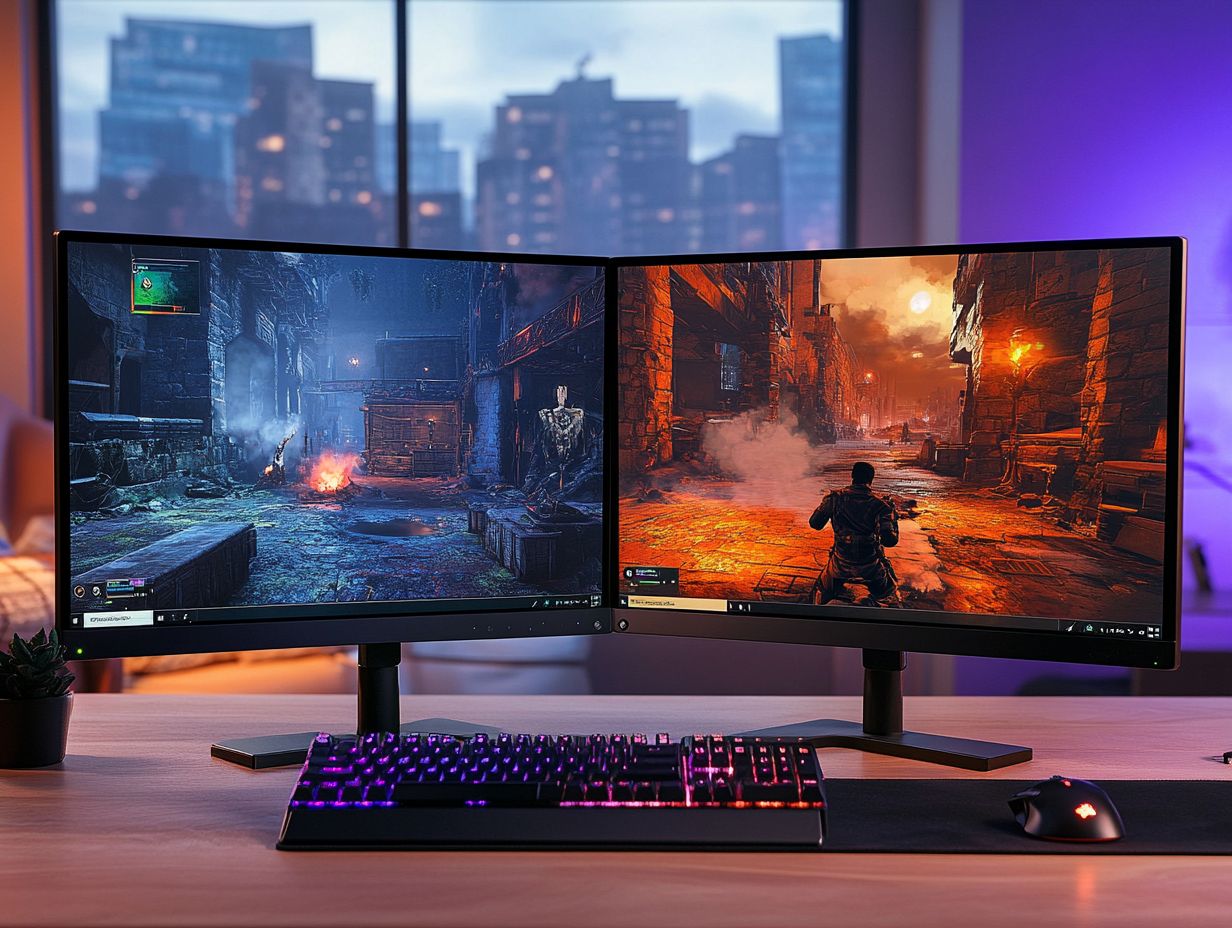
The advantages of 144Hz monitors are remarkable. They are especially beneficial for gamers who thrive on fast-paced action that requires peak performance and crystal-clear visuals.
With a 144Hz refresh rate, these monitors provide an exceptionally smooth gameplay experience. They reduce motion blur and elevate your overall enjoyment.
This technology is a game-changer in competitive gaming. Every millisecond counts, enabling quick reactions to ever-changing situations and gaining that crucial competitive edge.
The visual quality is also improved. You can fully appreciate the graphical beauty of your favorite titles without the annoyance of visual artifacts or ghosting effects.
Improved Gaming Experience
The undeniable allure of a 144Hz monitor lies in the enhanced gaming experience it delivers. It facilitates smoother gameplay that pulls you into dynamic environments like never before.
Diving into fast-paced shooters such as CS: GO and Apex Legends, that higher refresh rate can be the decisive factor between victory and defeat.
With each frame rendered seamlessly, you react more swiftly to on-screen action, making split-second decisions with newfound confidence.
These monitors often boast visual enhancements like adaptive sync technologies. These not only eliminate screen tearing but also elevate the sharpness of graphics.
This harmonious blend of fluid motion and stunning visuals creates a captivating atmosphere. It draws you deeper into the game and transforms your gaming session into an unforgettable experience.
Reduced Motion Blur
One of the key advantages of a 144Hz monitor is its remarkable ability to reduce motion blur. This provides a clearer and more precise view of high-speed movements, which is crucial in fast-paced action games. Even the slightest delay or distortion can alter the gaming experience.
In a first-person shooter, for instance, split-second decisions can mean the difference between victory and defeat. With crystal-clear visuals, tracking enemy movements becomes effortless, sharpening your competitive edge.
Similarly, in racing games, a smooth display enhances your experience by revealing vital details on the track, such as upcoming obstacles or turns.
By minimizing motion blur, 144Hz technology not only grants you a visual advantage but also improves your reaction times. Ultimately, this boosts your overall performance in competitive gaming environments.
Disadvantages of 144Hz Monitors
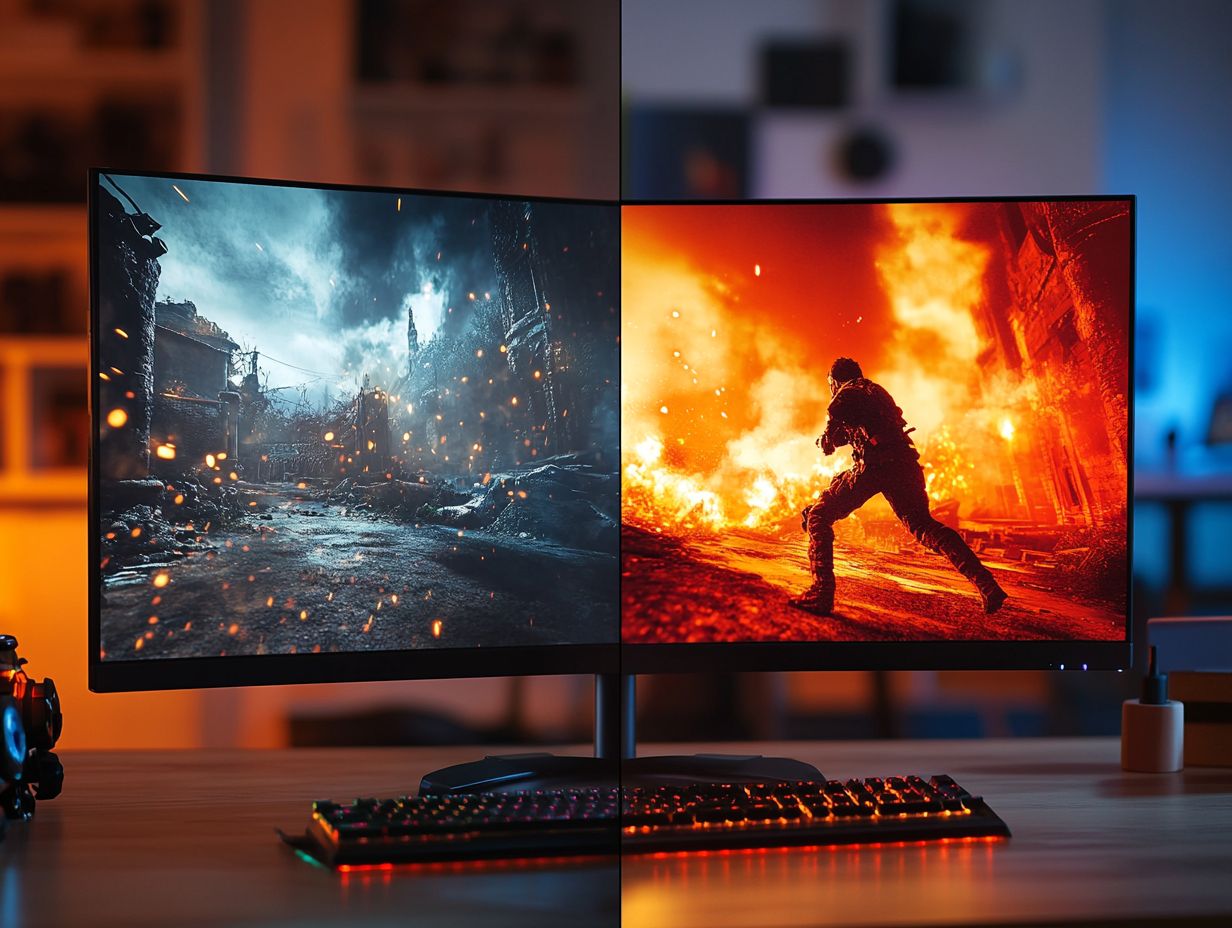
While 144Hz monitors offer many advantages, consider the drawbacks carefully before you buy.
These include a higher price point and possible compatibility issues with your current gaming setup.
Higher Cost
One notable drawback of 144Hz monitors is their higher price tag. This can represent a significant investment for many gamers. In contrast, monitors with lower refresh rates tend to be more budget-friendly, making them attractive for those who don t necessarily need high-speed performance.
However, the impressive features that 144Hz monitors provide like smoother gameplay, reduced motion blur, and enhanced responsiveness justify the price difference.
For gamers seeking a competitive edge or an immersive experience, this investment often proves worthwhile, especially in fast-paced gaming scenarios where every millisecond counts. While the initial cost might give some pause, the long-term benefits can dramatically enhance your gaming experience.
Limited Compatibility
Limited compatibility with your existing gaming hardware can present challenges when considering a 144Hz monitor. You may find that it requires certain graphics cards designed for advanced technologies like G-Sync and FreeSync. These technologies help reduce screen tearing for smoother visuals.
This lack of compatibility can lead to poor performance, with issues like screen tearing or stuttering affecting your gaming experience. If you’re aiming for total immersion in fast-paced titles, knowing the required hardware specifications is essential.
Upgrading components such as your GPU, CPU, or even RAM may be necessary to unlock the potential of a 144Hz refresh rate.
Don t overlook secondary factors either. The choice of cables and motherboards that support high-bandwidth outputs is critical for achieving the seamless gameplay you desire.
Factors to Consider Before Purchasing a 144Hz Monitor
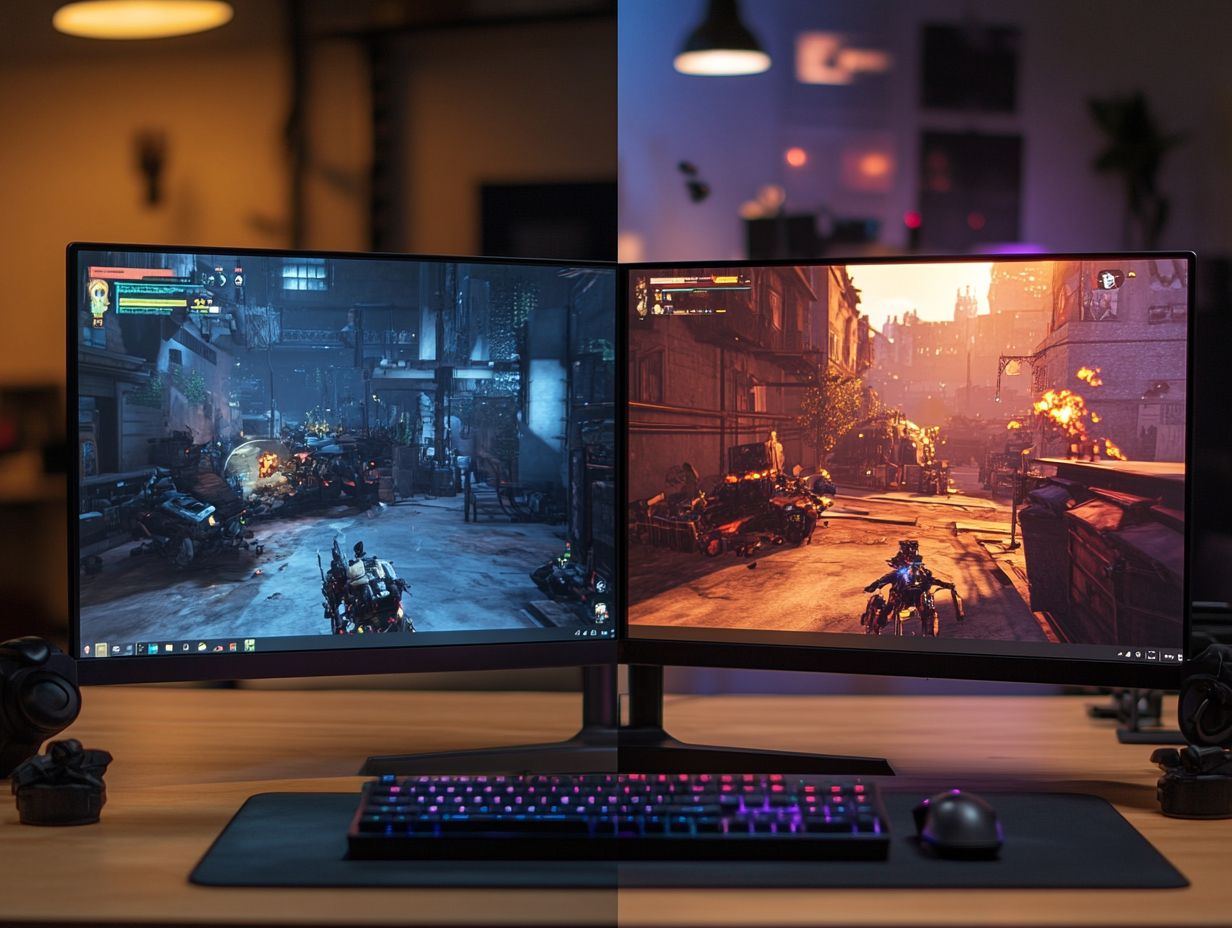
Before you invest in a 144Hz monitor, it’s essential to consider several key factors.
Reflect on your budget, assess your specific usage needs, and ensure compatibility with your gaming setup. Taking these elements into account will help you make a well-informed decision that enhances your gaming experience.
Budget and Usage Needs
Your budget and usage needs are crucial when selecting the ideal gaming monitor. You ll want to align your financial capacity with your expectations for a high-refresh-rate display.
When setting a budget, evaluate your personal gaming preferences. Are you leaning towards casual gaming, or do you find yourself engaged in competitive play?
Casual gamers might prioritize features such as vibrant colors and wider viewing angles, allowing for some flexibility in spending. However, if you’re drawn to the adrenaline of competitive gaming, you’ll likely seek monitors with higher refresh rates and faster response times, which generally come with a higher price tag.
This distinction plays a significant role in your monitor selection and influences how much you should invest in your entire gaming setup, ensuring that your choices are tailored to your unique gaming style and aspirations.
Compatibility with Other Devices
When choosing a 144Hz monitor, compatibility with other devices is crucial. It directly affects whether your gaming hardware can make the most of this impressive refresh rate.
To fully utilize the monitor s capabilities, verify that your gaming PC, console, and peripherals meet the necessary specifications. A strong graphics card is essential for generating high frame rates.
Make sure your console supports 144Hz output. Check the settings and use a high-quality cable to ensure a stable connection. This leads to a smoother gaming experience with minimal lag.
Alternatives to 144Hz Monitors
If a 144Hz monitor is out of reach, no worries! There are excellent alternatives available.
You can choose from 60Hz and 120Hz displays, which provide solid performance for everyday gaming. Watch for emerging 240Hz displays that cater to various gaming needs.
Other Refresh Rate Options
While 60Hz monitors are suitable for casual gaming, 120Hz monitors offer improved performance without the higher cost of 144Hz models.
This is particularly important for fast-paced games like first-person shooters or racing titles. Higher refresh rates, such as 144Hz or even 240Hz, can boost your response time and gameplay fluidity.
If you prefer slower-paced games like role-playing or strategy games, a 60Hz display will likely suffice. It provides a satisfying experience without the need for cutting-edge tech.
Understanding these options helps you make informed choices that align with your gaming preferences and budget. Enjoy a tailored gaming experience that’s just right for you!
Different Types of Monitors
When selecting a monitor, consider the different types available. IPS, TN, and VA panels each have unique advantages for gamers.
IPS panels are renowned for their vibrant color reproduction and wide viewing angles. They are perfect for immersive role-playing games and visually stunning titles that demand your attention.
If you re a competitive gamer, you might prefer TN panels. These are favored for their quicker response times and lower input lag, essential for fast-paced first-person shooters that keep your adrenaline pumping.
VA panels strike a harmonious balance, providing decent color quality along with superior contrast ratios. They are ideal for those who revel in cinematic gaming experiences.
Ultimately, the monitor you choose can dramatically impact your gameplay. Understanding these distinctions helps you select the perfect fit that aligns with your gaming style and preferences.
Frequently Asked Questions
What are 144Hz monitors and what are their benefits?
144Hz monitors refer to monitors with a refresh rate of 144Hz, meaning they can display 144 frames per second. These monitors offer a smoother and more fluid gaming experience, making games look more realistic and reducing motion blur.
What are the pros of using a 144Hz monitor?
The main advantage of a 144Hz monitor is its high refresh rate, which results in a smoother and more responsive experience. It also reduces eye strain and fatigue, making it easier to game for longer periods. Plus, it can improve gameplay in fast-paced games, giving players a competitive edge.
What are the cons of using a 144Hz monitor?
One of the main drawbacks of a 144Hz monitor is its higher cost compared to standard 60Hz monitors. It also requires a powerful computer and graphics card to fully utilize its capabilities. Additionally, some users may not notice the difference in refresh rate, making the extra investment less worthwhile.
Are 144Hz monitors only beneficial for gaming?
No, 144Hz monitors can also benefit other activities like video and photo editing. The high refresh rate allows for smoother and more accurate visuals, making it easier to work on detailed projects. However, for everyday tasks like web browsing and watching videos, the difference may not be as noticeable.
Do I need any specific hardware to use a 144Hz monitor?
Yes, to fully utilize a 144Hz monitor, you will need a powerful computer and graphics card that can handle higher frame rates. Most modern gaming PCs and laptops should be able to manage a 144Hz monitor without any issues.
What are the best uses for a 144Hz monitor?
144Hz monitors are best suited for fast-paced and competitive gaming, as well as activities that require smooth and fluid visuals like video editing or animation. They are also a great choice for those who experience eye strain or motion sickness while using a standard 60Hz monitor.

